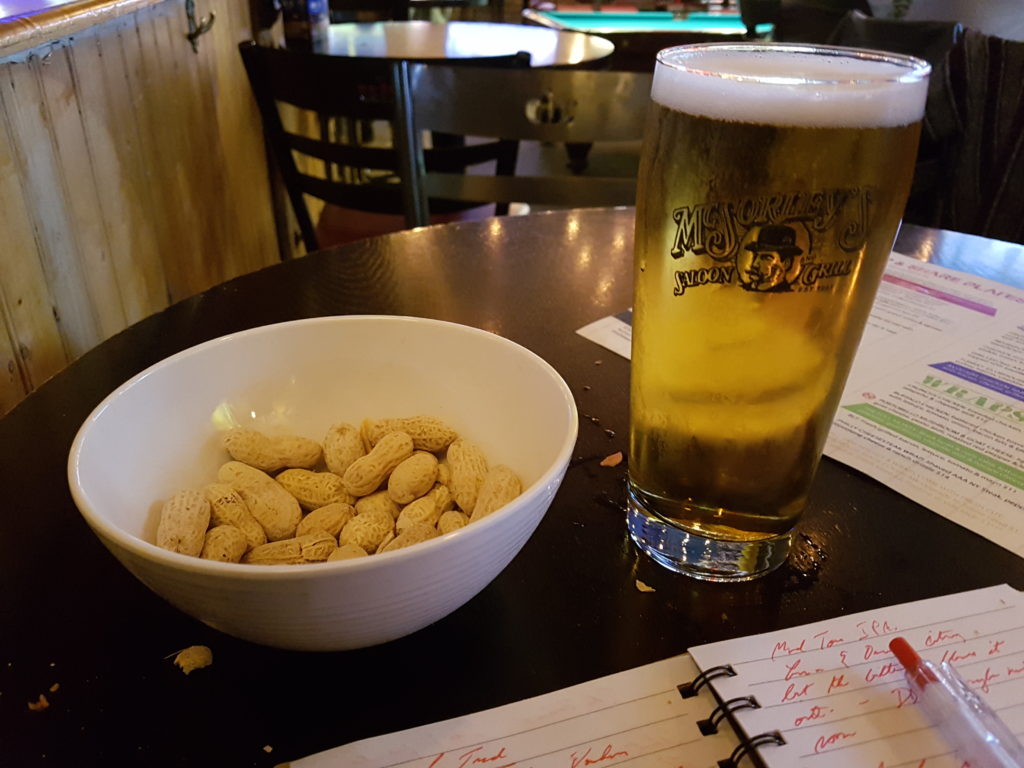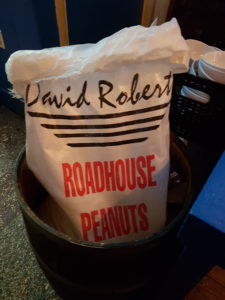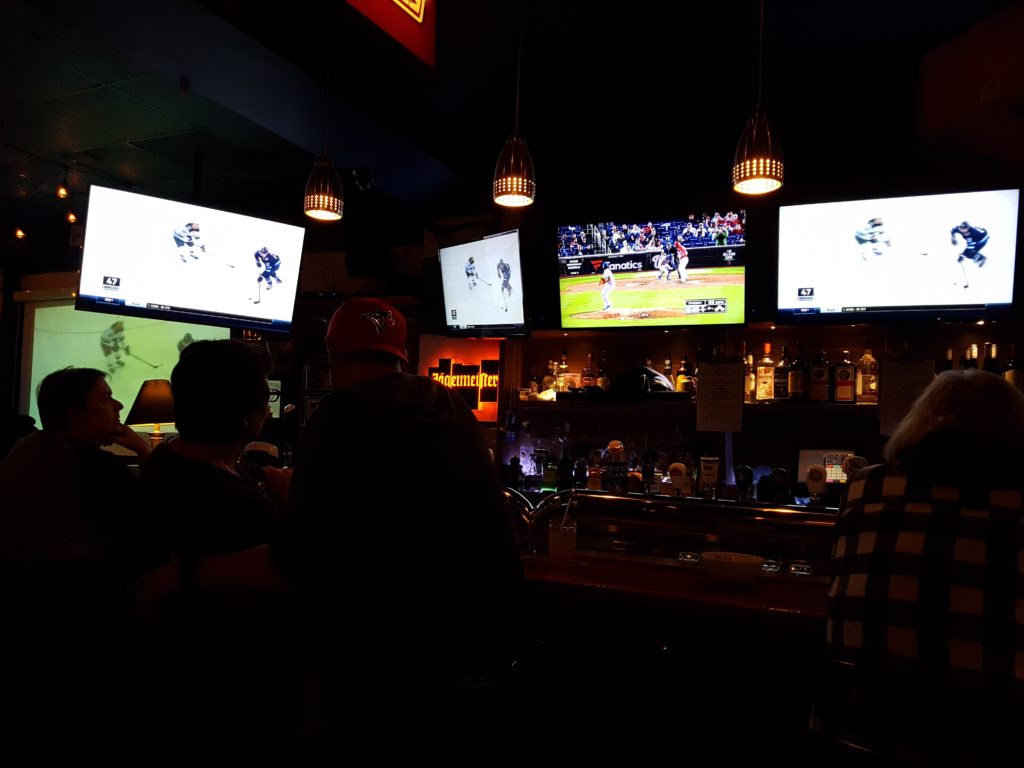Here’s an idea: Let’s take the three star Michelin chef at his word.
Maybe if you’re going to think more about food, you need a deeper well of reference and to break the problem down into components. I tell the kids in the beer appreciation class at George Brown that palate changes from person to person because it consists of a mechanical function and a mnemonic function. Your palate more or less depends on the ability to tell people about what it is that you’re tasting and that ability is made up of vocabularies not only linguistic, but experiential. Your memories go into defining your palate and you can always add to the collection. It’s just that some of the most profound bits are always going to be from when you’re very young.
It might be for those reasons of youth and inexperience that the memories of food are a little more difficult to channel. For the most part, we don’t get to beer until later. The saying goes, “beer is food, but food is not beer.” That’s just as well, because if the eating age were 19, we’d all be scofflaws.
Start simple. Intersectional.
Growing up in Leaside in the 90’s, the residents were more or less the first generation that moved in to the neighbourhood after the second world war, now elderly. The next generation, their children’s age, had started raising families of their own. There was always an odd understated current of repression through life, as though the fainting couch should be made ready lest someone use vulgar language. Mom tells me that the Presbyterian minister used to stand outside the Bayview LCBO when she was a kid, ensuring the parishioners were not having any fun. Everyone was lovely, but it has convinced me as an adult not to confuse dullness with goodness.
It may be for this reason that McSorley’s always stood out on Bayview. It wasn’t really somewhere our family went, but periodically someone else, like my friend Donovan, might have their birthday party there. The sports bar as a concept was a fairly late addition to Toronto. After the Jays got to the ALCS in 1991, they were far more widespread. McSorley’s had fajitas, which at the time was exotic, at least for Leaside. There was neon and loud music that blasted onto the street at night and a patio where people smoked. It was tantalizingly, but fairly gently outside the bounds of acceptability. In a profoundly middle class neighbourhood, it felt a little blue collar.
I pop along there about twice a year for that frisson of teenage rebellion, but mostly because they have one of my favourite bar snacks: roasted peanuts.
I didn’t realize how much I liked the genre of bar where you can throw peanut shells on the floor until I went to Windsor for the first edition of the beer guide. The Rock Bottom Bar & Grill in Sandwich Town has them and it immediately became one of my favourite bars in the province. When I went to Frank Brewing in Tecumseh the next day, I was delighted to find they did it as well.
Before we start in on it, a couple of points. Some wag would likely feel the need to point out if I didn’t that bowls of peanuts on bars are just breeding grounds for bacteria and that communal food is nasty. That’s not what I’m talking about. I’m talking about peanuts in their shell that you are shelling yourself. The other thing is that, yes, this is a little exclusionary as an offering. People with peanut allergies are never going to be able to set foot in bars that do this. I’m not sure I feel bad about that as long as there is adequate signage to prevent the use of epipens. They are expensive, after all.
A roasted peanut and a beer seems very simple.
From an anthropological perspective, it’s really not. Peanuts are a New World crop, domesticated in South America something like 4000 years ago. It becomes an important crop in Peru, but doesn’t make its way to Europe, Africa and Asia until it’s transplanted by Portuguese traders. New World produce features significantly in what we’ve come to think of as beer friendly food. You’re not going to see me talking a lot about pottage.
There are a lot of culinary applications, and most involve processing. They’re higher in oil content than soybeans and the oil has a high smoke point. If you remove some of the fat, you can turn them into flour. We’re concerned with the whole seed.
Peanuts grow seed pods down into the ground, and they’re one of very few examples of plants that do this; it’s called geocarpy. They are seed pods, incidentally. To be a nut, you more or less need to have grown on a tree. Peanuts are legumes. If you think about tree nuts like almonds, chestnuts, brazil nuts, macadamia nuts, you’ve got one nut per shell. The peanut might have two or three, and that’s because it is a seed pod.
Crack open the shell and you’ve got two seeds called cotyledons. They have seed coats; that papery red skin on the outside of the peanut that sticks to your teeth. When you split the peanut in two, the nub on one half is the radicle. If you planted that seed pod, the radicle would chit and form roots and the seed would just be fuel. From the perspective of embryonic growth, it’s extremely similar to the barley going into the beer. All of the growth is arrested through roasting.
What about the salt? How do you get that inside the shell? Well, you brine them. Depending on the manufacturer, you’re soaking the whole seed pod in salted water and then draining it. You evaporate the liquid in a dryer and then roast the seed pod. What you get is non-enzymatic browning. Roast flavour: It’s the maillard reaction and in this case you get pyrazines becoming melanoidins. Salt and roast and nutty sweetness and gently coating oil, crunch and a little contrast from astringency in the seed coat. The levels of texture difference vary nut to nut because the process can’t be entirely uniform.
The peanuts are calorically dense. A cup of peanuts would be 828 calories and contain 101% of your daily fat calories. The peanuts are free, but the copious amount of salt ensures you’re going to need beer. They contain enough fat and protein to keep you out of trouble if you drink a lot of beer. The question is what beer? Well, McSorley’s has some beers from larger craft brewers, so I sat and ordered half pints and made notes, which is the kind of thing that sticks out like a sore thumb in a bar where people are watching sports.
When you talk about pairings, the canonical method is to talk about cut, contrast, and complement. Usually, it will be one of those methods that does the trick, but I’m never really sure how much research people who use those terms have done. I don’t like them because it smacks of shorthand and I am about effort.
Beau’s Lug Tread Lagered Ale is everywhere now, so I started with that. It’s the #summeroflug, after all. It is a light, Kolsch style beer and in the time I was sat there, it was getting some attention from the regulars. As a pairing, it has commonality with the peanuts themselves. While the carbonation helps to lift the oil from the palate and slake the thirst generated by the salt, the intensity of the malt character meets the peanuts on an essentially equal footing. When you think about the colour of beer, it has to come from somewhere and you get the same non-enzymatic browning in malt kilning as you do in roasting peanuts. In Lug Tread, they’re using Carafoam malt for colour, and while it’s light in colour it does add some melanoidin to the beer. It is not as though the two elements butt heads. It works well, but it’s not very interesting.
Mad Tom IPA from Muskoka manages to outweigh the peanuts. While it still performs the tasks of slaking thirst and lifting oil from inside your mouth, the affinity is with the mildly astringent seed coat because of the beer’s massive bitterness. 64 IBU is not nothing. The citrus and pine elements have little to do but pull an umami like meatiness out of that seed coat. It’s a good beer, but it’s actively unpleasant in this context.
The winner here is Amsterdam 3 Speed Lager. It’s a Light Lager, but with solid ingredients. Ok, hear me out. If the level we’re pairing at takes for granted temperature, carbonation and quenching thirst, then the remaining variable are that roast nuttiness, sweetness, and salt. If that’s what you want, then 3 Speed simply doesn’t get in the way of those things. It’s an enormous amount of sodium, so a lower alcohol, more quaffable beer allows the flavour of the peanuts to take the lead. There is some grain character, but it’s lighter than the melanoidin in the peanut.
So I decide on 3 Speed and order a full pint so the waitress doesn’t think I’m a weirdo. Probably too late. I realize that I know why the pairing works from a technical standpoint, but it’s really the experience that I like. You could think you’re killing a couple of hours, but really it’s your attention that’s being consumed and the mechanical process of opening and eating the peanuts matches the busyness of the room. I count a dozen TV’s in the room and what can only be called bar rock blasts on the overhead speakers and it’s really ADD Bebop. With work out of the way, Steve Nieve’s organ kicks in on Radio Radio and the next half hour is:
Crack. Macedo looks way tougher than Lee. Crunch. I’d bet on her if I had to bet. Sip. What are those, fajitas? Crack. Those fajitas smell great. Crunch. “Son of a Bitch. Gimme a drink.” Sip. Who ordered those? Crack. Lebron looks confused. Crunch. The Cavs are up 30. Sip. Oh, Macedo is down. Crack. “…millions of people living as foooooooes…‘ Crunch. Looks like Antonio Inoki down there. Sip. Yasiel Puig has a runner in scoring position. Crack. Macedo’s bleeding. Sip. Crack. Should I get the fajitas? Crunch. Sip. “…good times never seemed so good…” Crack. Is the bartender doing Jager shots?” Sip. Crunch. Sip. That’s like the fourth shot he’s done since I’ve been here. Crack. Crunch. Sip.
When the bartender is outdrinking you and Nathaniel Rateliff comes on for the second time in the hour, it’s time to go home. Waiting for the Bayview 11 at Millwood, Corey Hart plays from the patio speakers loud enough to fill the otherwise silent streetscape. In some it will always be 1993, and although the posters celebrating the World Series are faded, very little else changes.



That is a great post Jordan. Love that little gem on Bayview. Truly good ole fashioned pub and grub and roasted peanuts. Cheers to the holiday Monday.